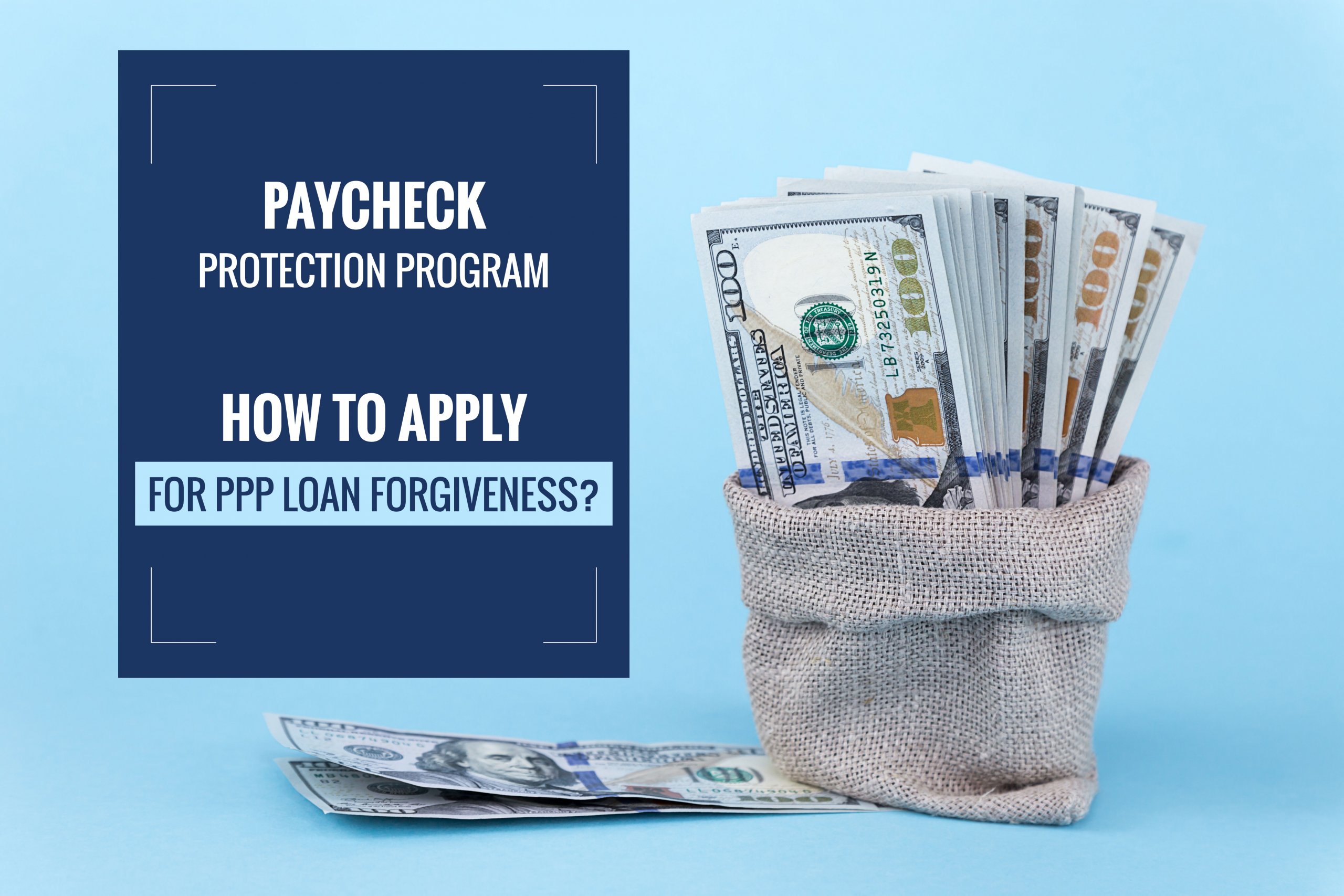How to apply for PPP loan forgiveness

Paycheck Protection Program – How to apply for PPP loan forgiveness?
The Paycheck Protection Program was part of both stimulus bills passed in 2020. The purpose of the loan was to allow business owners to make payroll and keep the lights on during the COVID-19 shutdown and weak economic period caused by the pandemic. Loans were distributed by the Small Business Association, or SBA, through local lending institutions. While the loan application process was fairly simple, particularly if you already had business loans through a traditional lender, applying for a loan forgiveness allowance is more of a challenge.
Who Qualifies for Forgiveness?
To qualify for PPP loan forgiveness, you need to have spent at least 60% of the loan you received on payroll expenses. Additionally, to receive full forgiveness on a Paycheck Protection Program loan, the remaining 40% has to go toward
- Utilities building rent
- Protective gear, such as masks, face shields, and gloves
- Supplier payments that are essential to keeping the doors open, and accounting and computing software
If you didn’t use all of the funds for these purposes, you can still get partial forgiveness. Additionally, if you were forced to lay off employees but were able to bring your staffing levels back to 100% during the time periods required, you can get full forgiveness. If your staffing is only back up 75%, you can only apply for 75% forgiveness.
Be Prepared for Changes
It’s important to note that the second stimulus bill of 2020 changed allowable expenses and altered the time frame for laying off and bringing back employees. The chances of a third stimulus bill in 2021 are good, which could bring further changes.
Discuss your PPP forgiveness application plans with your lender and your accountant. Keep an eye on your deadlines to avoid the risk of missing the time window for a forgiveness application, but do try to wait until the end of the period so your forgiveness application doesn’t get in the way of possibly receiving more funding. This is a landscape in flux; you must get each loan application and forgiveness application right to avoid facing repayment requirements or penalties.
 Be Prepared With Documentation
Be Prepared With Documentation
To reduce worries as you prepare for your loan forgiveness application, gather up
-
Photo ID
-
Payroll tax reports
-
All pertinent Form 941s
-
1040C if applicable
-
Your EIN
-
The original loan documentation
You may not need all of these forms, depending on what you borrowed, but having it all together will make the process much simpler.
What Periods Are Covered?
The first stimulus package required the small business owner to choose a loan period that had to cover either 8 or 24 weeks. The second stimulus uses 8 to 24 weeks as a range from which they can make a selection.
It’s important to note that these loans don’t require any collateral. The interest rate is extremely low at 1%. If your business was able to make the necessary adjustments and is up and running again, the biggest risk you likely need to worry about is getting your forgiveness application filled out correctly and filled out in a timely manner. Now that you have the basics on how to apply for PPP loan forgiveness, lets move on the the steps required.
The Steps to Forgiveness
Once you have your documentation gathered, you’ll need to submit a letter requesting loan forgiveness to your lender. If you borrowed less than $150,000, the forgiveness application is a one page form that will confirm
-
The original loan amount
-
Your employee headcount and retention rate
-
Your estimated payroll costs during the loan period
It’s critical to note that even with these truncated forgiveness rules, you will still need to prove where those dollars went. If at all possible, go to the trouble to fill out the full forgiveness form and have it checked over by your lender to protect yourself from a revisit to either your loan application or your forgiveness application.
If you borrowed more than $150,000, the forgiveness application will be at least as onerous as the loan application was, and all of the documentation listed above will be necessary. Put in the time and effort to get these right. Should your name, business name or EIN get tangled up in a failed application, either for a loan or forgiveness, the next step in your borrowing could be delayed.
Your lender will be the entity that lets you know the status of your forgiveness application. You should know your status from them within 60 days. Your forgiveness application will then go to the SBA, who will respond within 30 days. During this 30 day window, you can request the SBA reconsider your request, but be aware that their decision is final.
If you can only get partial forgiveness, your PPP loan repayment will need to start ten months after the loan period has ended. Again, making sure that your
-
Initial application
-
Forgiveness request, and
-
Future applications
Are completely accurate before submitting them is so critical to staying in the loop for future loans. Many small businesses are working very close to the financial edge at this stage. Do whatever you can to make sure that your loan application doesn’t get kicked back or delayed over a simple error. Track where the funds go and make absolutely sure you’re staying within allowable guidelines for these funds. Be aware that the guidelines will probably change.
Keep lines of communication open with your lender. If you plan to apply for forgiveness, gather up your documents now. Keep a bundle of your applications, your forgiveness forms, and all of your payroll and other qualified expense documentation within easy reach for transmittal to the SBA should they ask.
If you have not applied for your first or second draw please contact our office and our staff will be glad to provide you additional information. And if you are an existing client and have more questions on how to apply for PPP loan forgiveness don’t delay and contact us today.

